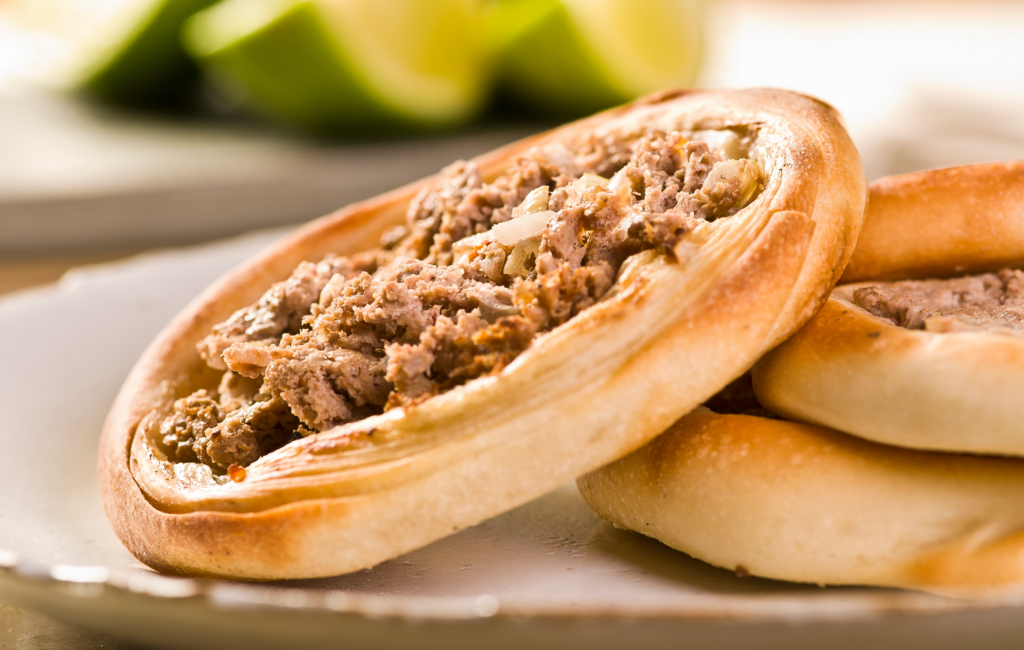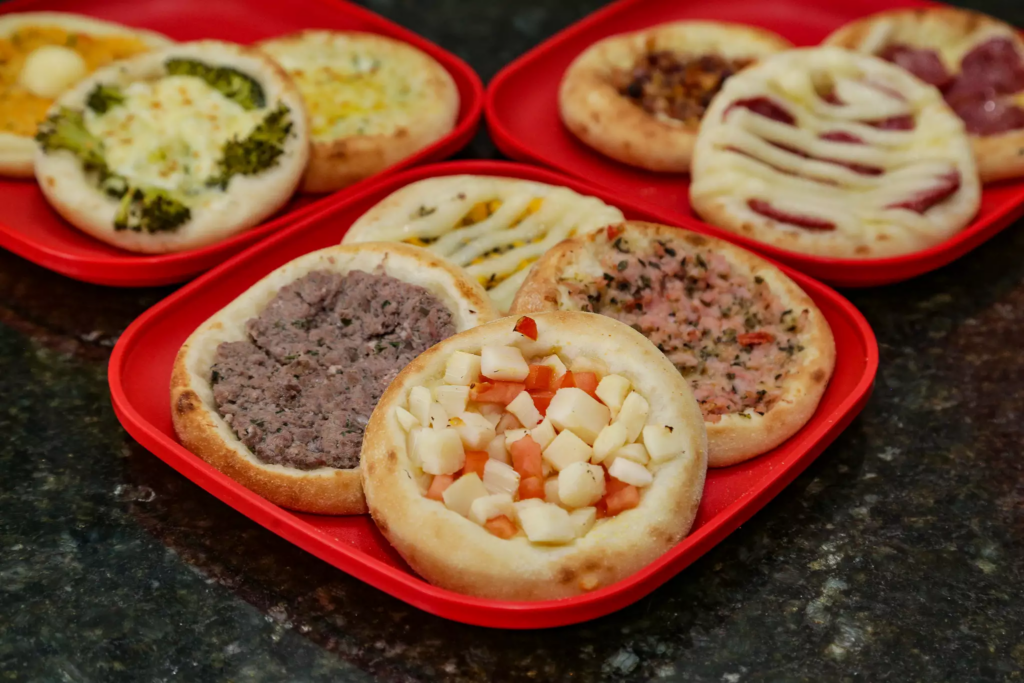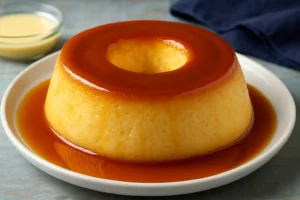Advertisement
If you're a fan of Arabic cuisine or just a lover of delicious food full of flavor, then you've come to the right place! Today, we're going to share with you an incredible and versatile recipe: esfihas. These delicacies are perfect for a quick snack, a side dish for meals or even as a main course. Best of all, we're going to show you how to make them open and closed and in an easy way, so you can enjoy them whenever you want, in the comfort of your own home.
Open Esfiha Recipe
The esfiha, one of the most popular dishes in Arab cuisine, is known for its soft dough and richly flavored filling. Among the many variations of this delicacy, the open esfiha stands out as a versatile and delightful option. With its thin, crispy dough and a generous filling that can be adapted to suit personal taste, the open spfiha is a veritable explosion of flavors and textures with every bite.
Advertisement
Ingredients
- 500g wheat flour
- 1 tablespoon dry biological yeast
- 1 tablespoon sugar
- 1 teaspoon salt
- 1/4 cup vegetable oil
- 1 cup warm water
- Seasoned ground beef
- White cheese
- Sauteed spinach
- Chopped tomatoes
- Chopped onion
- Chopped parsley
- Syrian pepper (zaatar)
- Lemon (to serve)
Preparing the dough
In a large bowl, mix together the flour, yeast, sugar and salt.
Gradually add the vegetable oil and warm water, mixing until a homogeneous mass is formed.
Advertisement
Knead the dough on a floured surface for about 10 minutes, or until it is soft and elastic.
Cover the dough and let it rest for about an hour, or until it has doubled in size.
Assembling the spheres
After the resting time, divide the dough into small portions and shape them into balls.
Roll out each ball of dough into a thin circle, about 10 to 15 centimeters in diameter, depending on the size you want your spfihas to be.

To make the closed spheres, place a portion of the filling of your choice in the center of each circle of dough, close the edges to form a triangle and pinch well to seal.
To make the open spheres, place a portion of the filling in the center of each circle of dough and spread it out evenly, leaving the edges free.
Preheat the oven to 200°C.
Baking the spfihas
Transfer the spfihas to a greased baking sheet or one lined with baking paper. If desired, brush the edges of the patties with a mixture of water and olive oil for a golden finish.
Place the spfihas in the preheated oven and bake for 15-20 minutes, or until they are golden brown and cooked through. Take them out of the oven and let them cool for a few minutes before serving. Serve your esfihas with lemon cut into quarters for an extra touch of flavor.
Now you're ready to enjoy delicious homemade esfihas, both open and closed, made with a simple, easy-to-follow recipe. Experiment with different combinations of fillings to create your own personalized versions.
Closed Esfiha Recipe
While the open esfiha enchants with its thin dough and generous filling on display, the closed esfiha is a classic that embraces its secrets in a layer of dough, revealing an explosion of flavors with every bite. With its discreet appearance but its unmistakable flavor, the closed esfiha has won hearts around the world.
To prepare these delicacies in your own kitchen, you'll need the same basic dough ingredients and an irresistible filling. The main difference lies in the assembly, which involves a painstaking folding process to ensure that each unopened esfiha is a small work of gastronomic art.
Ingredients
- Sfiha dough (see the dough section in the previous recipe)
- Stuffing of your choice (seasoned ground beef, white cheese, sautéed spinach, etc.)
Prepare the dough
Follow the instructions for preparing the spfiha dough as described in the dough section of the previous recipe.
Divide the dough into small portions and shape into balls.
Roll out the dough
Take a ball of dough and roll it out on a floured surface into a thin circle about 10 to 15 centimetres in diameter.
Add the filling
Place a portion of the filling of your choice in the center of the circle of dough.
Fold and seal the slice
Take the edges of the dough and fold them over the filling, forming a triangle or an oval shape, depending on your preference.
Press the edges well to seal the sponge, ensuring that the filling is completely covered by the dough.
Make decorative cuts (optional)
With a sharp knife, make small decorative cuts on the surface of the closed sponge, if desired.
Transfer to the baking dish
Place the closed spheres on a greased baking sheet or one lined with parchment paper, leaving space between them so that they can grow as they bake.
Bake the spheres
Preheat the oven to 200°C.
Place the spfihas in the preheated oven and bake for 15-20 minutes, or until they are golden and cooked through.
Serve and enjoy
Remove the spfihas from the oven and let them cool for a few minutes before serving.
Serve your closed esfihas warm and enjoy the irresistible flavor of this Arabic delight!
With these simple steps, you can prepare delicious closed spheres at home. Experiment with different combinations of fillings and be amazed by the versatility and taste of these little wonders of Arab cuisine.
Types of filling for esfihas
One of the most charming aspects of the esfiha is its versatility when it comes to fillings. From the classic and traditional to the more creative and innovative, there are endless combinations that can be explored to satisfy every palate.
1. Seasoned Ground Beef
One of the most classic and traditional fillings, spiced ground beef is a combination of ground beef with Arabic spices such as onion, garlic, Syrian pepper, cinnamon and mint.
Ingredients
- 500g ground beef
- 1 chopped onion
- 2 chopped garlic cloves
- 1 teaspoon of Syrian pepper
- 1 teaspoon cinnamon powder
- Salt to taste
- Chopped parsley to taste
In a frying pan, sauté the onion and garlic in a little olive oil until soft.
Add the minced meat and cook until browned.
Season with allspice, cinnamon, salt and parsley.
Leave to cool before using as a filling for the spfihas.
2. White cheese
A simple and delicious filling made with white cheese, which melts during cooking, creating a creamy and irresistible texture.
Ingredients
- 250g white cheese (like minas frescal)
- Oregano to taste
- Olive oil for dressing
Mash the white cheese with a fork to obtain a creamy consistency. Season with oregano to taste. Spread the cheese over the spfiha dough and drizzle with a little olive oil before baking.
3. Braised spinach
A healthy and tasty option, sautéed spinach is prepared with fresh spinach leaves sautéed with onion, garlic and olive oil.
Ingredients
- 300g washed and chopped spinach leaves
- 1 chopped onion
- 2 chopped garlic cloves
- Olive oil
- Salt and pepper to taste
In a pan, sauté the onion and garlic in a little olive oil until soft.
Add the spinach leaves and sauté until wilted. Season with salt and pepper to taste.
4. Curd cheese with tomatoes and basil:
A classic and delicious combination of melted curd cheese, fresh tomatoes and basil, which brings a contrast of flavors and textures to the esfiha.
Ingredients
- 200g diced curd cheese
- 1 tomato cut into small cubes
- Fresh basil leaves
- Olive oil for dressing
- Salt and pepper to taste
Distribute the cubes of curd cheese on top of the esfiha dough. Add the diced tomatoes on top of the cheese. Season with salt and pepper to taste and add a few leaves of fresh basil. Drizzle with a little olive oil before baking.

Leave to cool before using as a filling for the esfihas. These are just a few options for filling esfihas, but creativity knows no bounds when it comes to delicious combinations. Feel free to experiment with different ingredients and create your own variations of esfihas!
Origins, History and Curiosities about the Esfiha: A Journey through Arab Cuisine
The esfiha, one of the most iconic and beloved specialties of Arab cuisine, carries with it a rich history that stretches back centuries. Originating in the Levant, a region that encompasses countries such as Lebanon, Syria and Palestine, the esfiha is more than just a simple gastronomic delicacy; it is a symbol of the culture, tradition and hospitality of these lands.
Origins of the Esfiha
The origins of the esfiha go back to an ancient period, rooted in the traditions and culture of the Levant, a rich and diverse region that encompasses countries such as Lebanon, Syria, Palestine and Jordan. For centuries, the Levant was a center of trade and cultural exchange, where people of different origins met, shared ideas and influenced each other.
It was in this multifaceted context that the esfiha began to take shape. In the bustling streets of the Levantine cities, street merchants prepared and sold a variety of foods to satisfy the palates of passers-by. Among these foods, the esfiha stood out, with its light dough and aromatic fillings, which quickly became a popular choice among the locals.
The word "esfiha" derives from the Arabic term "safih", which means "open", a reference to the dish's distinctive feature: its thin dough and generous filling, which is traditionally exposed for all to see. This open aspect of the esfiha not only makes it visually appealing, but also allows the flavors to blend harmoniously during cooking, creating a unique gastronomic experience.
Over the centuries, the esfiha has become a symbol of Levantine cuisine, representing not only a tasty dish, but also a connection to the region's traditions and cultural roots. Its popularity grew and spread beyond the borders of the Levant as Arab peoples migrated to other parts of the world, taking their recipes and culinary customs with them.
History of the Esfiha
The word "esfiha" derives from the Arabic term "safih", which means "open", a reference to the dish's distinctive feature: its thin dough and generous filling. Over time, the esfiha evolved and spread throughout the Levant region, becoming an essential part of the local cuisine.
During the 20th century, with the immigration of Arabs to other parts of the world, such as Brazil and the United States, the esfiha found new fans and adapted to different tastes. Today, it is enjoyed all over the world, both in restaurants specializing in Arabic food and in street food establishments.
Curiosities about the Esfiha
At first glance, esfiha may seem like a simple pastry filled with tasty ingredients. However, behind this apparent simplicity, there are a number of fascinating curiosities that contribute to making this dish so special and loved around the world.
Regional Variations
In different regions of the Levant, you'll find unique variations of the esfiha. For example, in Syria, it's common to find esfihas filled with dried curd, while in Lebanon, the filling can include ingredients such as pine nuts and pomegranate.
How to prepare
The esfiha can be prepared in various ways, including open and closed, as we saw earlier. In addition, there are variations such as puff pastry, where the dough is replaced by thin sheets of filo pastry.
Creative Fillings
Although the traditional esfiha is filled with seasoned minced meat, white cheese or spinach, there are no limits to creativity when it comes to fillings. Some modern versions include unusual combinations such as lamb with pumpkin or mushrooms with feta cheese.
Symbol of Hospitality
In Arab culture, offering food to visitors is a gesture of hospitality and generosity. The esfiha, with its ease of preparation and ability to feed several people, is often served at family celebrations and social gatherings.
The esfiha is much more than just a simple recipe; it is a symbol of a rich cultural heritage, a testament to the diversity and creativity of Arab cuisine and a reminder that food has the power to unite people and transcend borders. So the next time you enjoy an esfiha, remember the stories and traditions that are woven into this small but mighty dish.
See also: Simple lemon tart with cornstarch: Here's how to make it
March 30th, 2024

She has a degree in Languages - Portuguese/English, and is the creator of the Escritora de Sucesso website. As a writer, she seeks to expand everyone's knowledge with relevant information on various subjects. At SoMuchToSayToday, she brings news and content ranging from entertainment to the country's economic situation.



